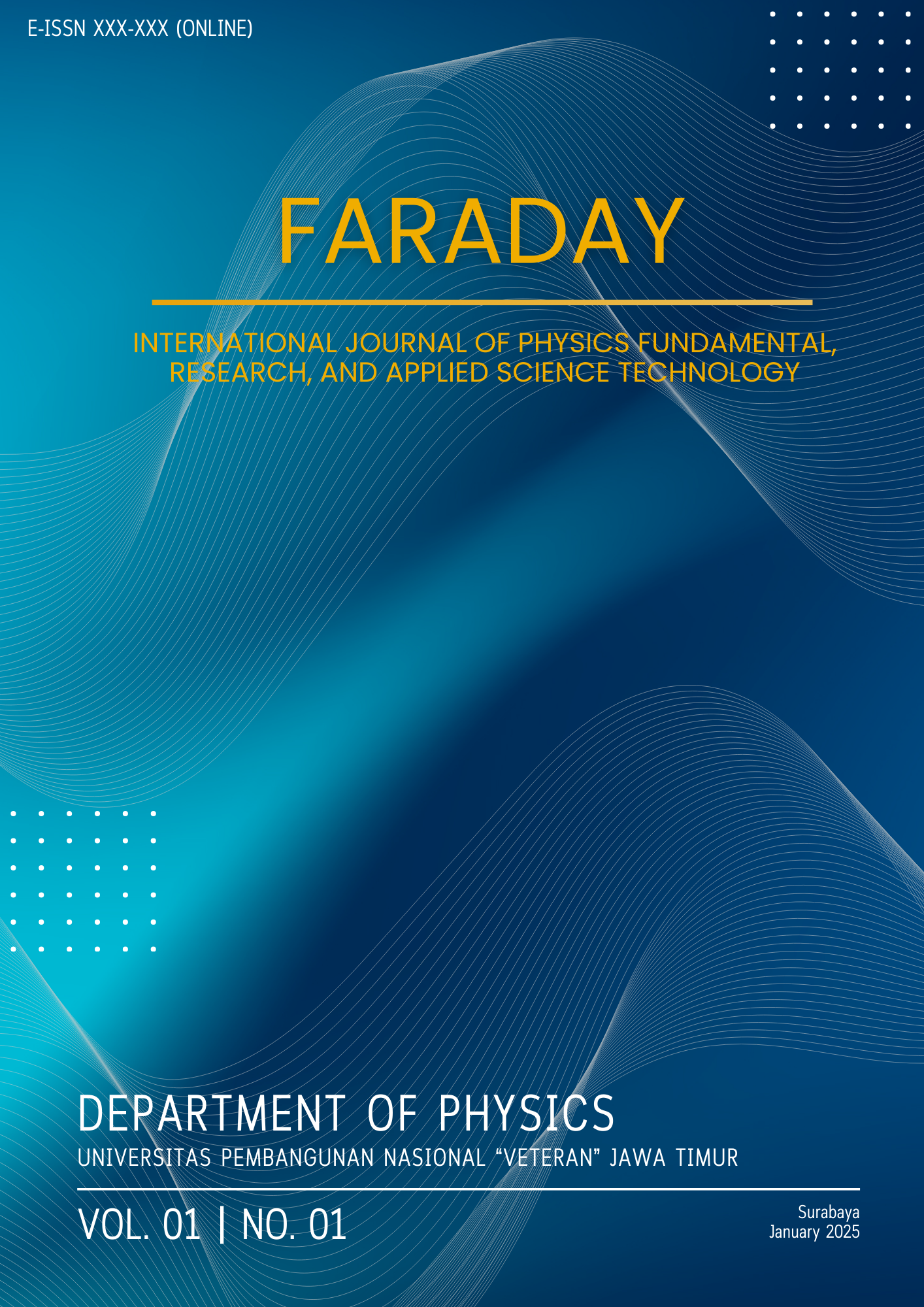The Impact of Plate Length and Material Variations on Tibial Bone Implants Analysis using Computational Biomechanics
DOI:
https://doi.org/10.33005/faraday.v1i1.2Keywords:
Plat, Implant, Co-Cr, SteelAbstract
The aim of this research is to simulate the strength of the implant plate, as a method for healing tibia fractures by combining bone with a bone plate. Then model and analyze using ANSYS software to analyze loads such as deformation and the maximum distribution of von Mises stress values. The results of the Maximum Principal Stress analysis on the cobalt-chromium implant plate show a minimum value of -1.2527107 Pa (-12.527 MPa) and a maximum value of 7.57610 7Pa (75.76 MPa). Based on the research results, Co-Cr material has significant advantages compared to steel as an implant material. In addition, this material has excellent corrosion resistance and very good biocompatibility, making it safe for long-term use in the human body without significant risk of allergic reactions or irritation.
Downloads
References
Budi, G. S. (2011). PENGUJIAN KUAT TARIK DAN MODULUS ELASTISITAS TULANGAN BAJA (KAJIAN TERHADAP TULANGAN BAJA DENGAN SUDUT BENGKOK 45°, 90°, 135°). Jurnal Teknik Sipil, 11(1). https://doi.org/10.26418/jtsft.v11i1.1070
Jorge-Mora, A., Amhaz-Escanlar, S., González, I. C., Teso, C. L.-D., Gómez, R., Jorge-Mora, T., Caeiro-Rey, J. R., & Pino-Mínguez, J. (2018). Management of Open Fracture. Dalam O. Karcioglu & H. Topacoglu (Ed.), Trauma Surgery. InTech. https://doi.org/10.5772/intechopen.74280
Lubis, M. I., & Siregar, N. P. (2022). HUBUNGAN PANJANG TULANG TIBIA TERHADAP TINGGI BADAN PADA MAHASISWA DAN MAHASISWI FK UISU ANGKATAN 2018. 21.
Mahyudin, F., Waskita, H. C., Utomo, D. N., Suroto, H., & Martanto, T. W. (2019). Uji Biokompabilitas pada Implan Orthopedi Antara Implan Impor, Implan Lokal dari Material Impor, dan Prototipe Stainless Steel 316L dari Material Lokal. Qanun Medika - Medical Journal Faculty of Medicine Muhammadiyah Surabaya, 3(1), Article 1. https://doi.org/10.30651/jqm.v3i1.1612
Mani, G., Porter, D., Collins, S., Schatz, T., Ornberg, A., & Shulfer, R. (2024). A review on manufacturing processes of cobalt-chromium alloy implants and its impact on corrosion resistance and biocompatibility. Journal of Biomedical Materials Research. Part B, Applied Biomaterials, 112(6), e35431. https://doi.org/10.1002/jbm.b.35431
Marti, A. (2000). Cobalt-base alloys used in bone surgery. Injury, 31 Suppl 4, 18–21. https://doi.org/10.1016/s0020-1383(00)80018-2
Munford, M. J., Stoddart, J. C., Liddle, A. D., Cobb, J. P., & Jeffers, J. R. T. (2022). Total and partial knee arthroplasty implants that maintain native load transfer in the tibia. Bone & Joint Research, 11(2), 91–101. https://doi.org/10.1302/2046-3758.112.BJR-2021-0304.R1
Ramdhani, M. Z., Rahayu, U., & Nugraha, B. A. (2024). MANAJEMEN PASCA BEDAH PADA KASUS OPEN FRAKTUR SEGMENTAL CRURIS: CASE REPORT. SENTRI: Jurnal Riset Ilmiah, 3(6), 3144–3157. https://doi.org/10.55681/sentri.v3i6.3007
Downloads
Published
Issue
Section
License
Copyright (c) 2025 Sakinah Sakinah, Primasari Cahya Wardhani, Reffany Choiru Rizkiarna, Deliana Nurfauziyyah Aminallah, Nenni Mona Aruan, Zakiyah Dania Billah

This work is licensed under a Creative Commons Attribution 4.0 International License.














